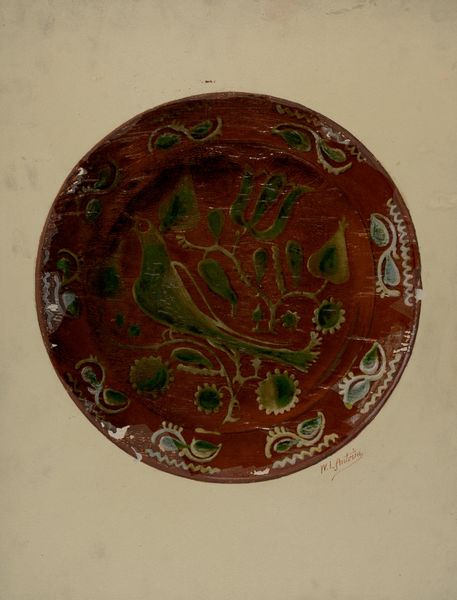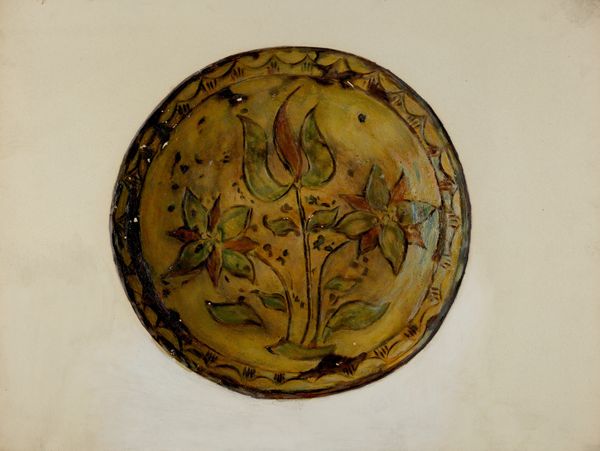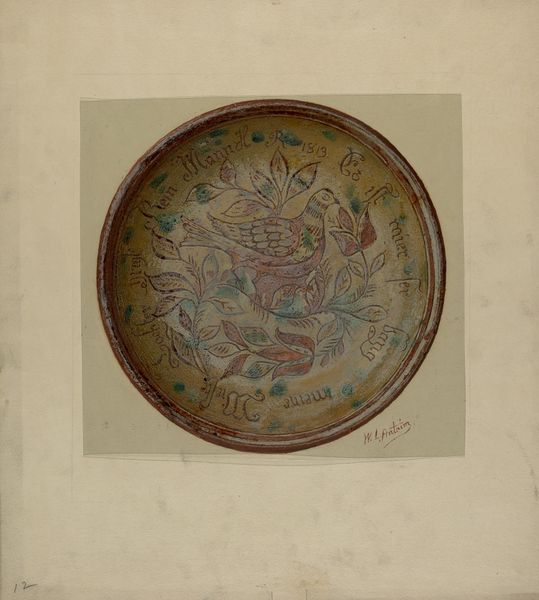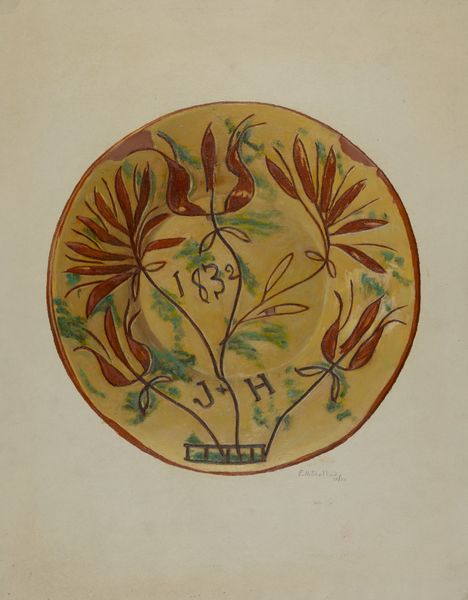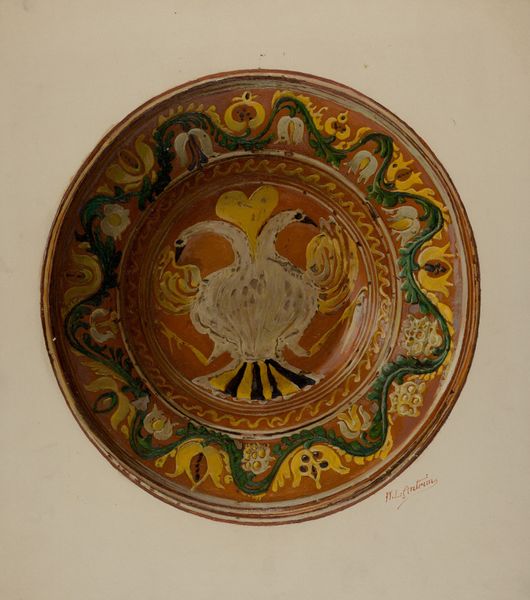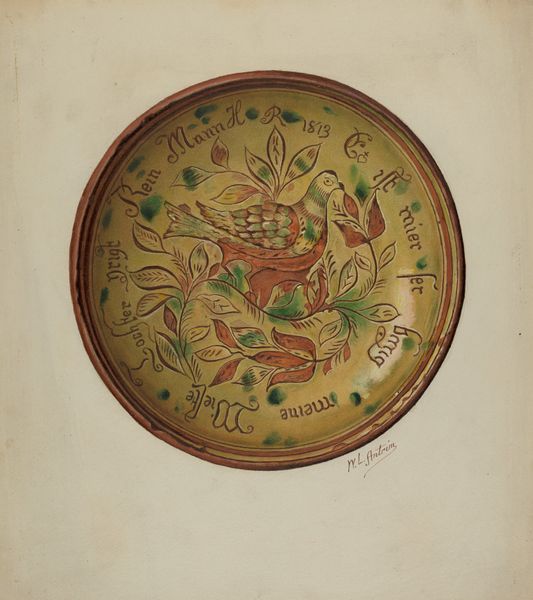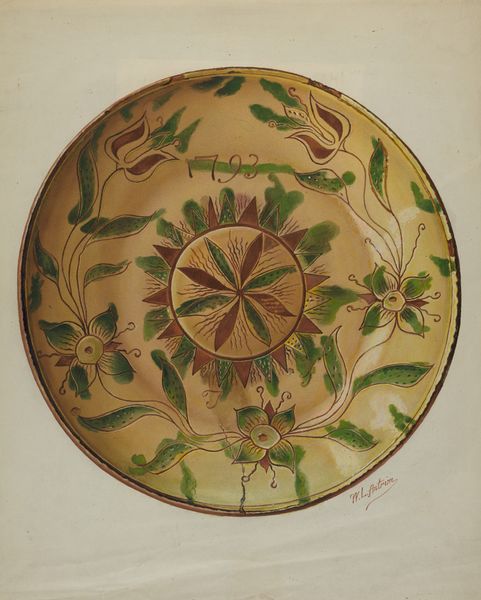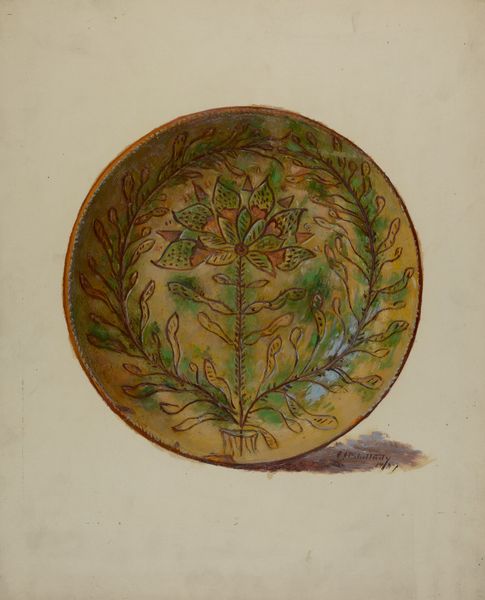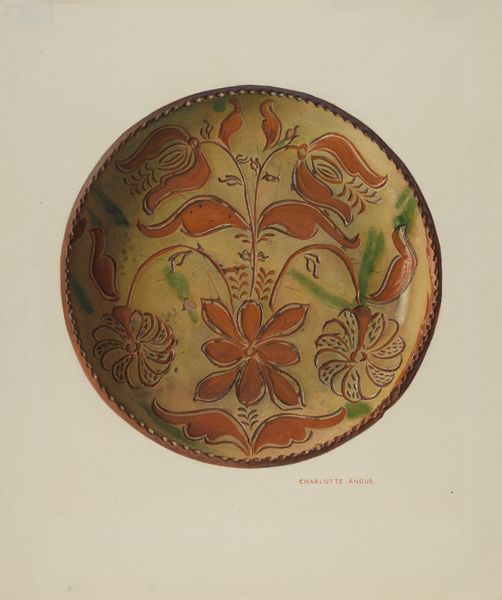
drawing, watercolor
#
drawing
#
water colours
#
watercolor
#
folk-art
#
decorative-art
Dimensions: overall: 50.9 x 43 cm (20 1/16 x 16 15/16 in.)
Copyright: National Gallery of Art: CC0 1.0
Editor: This is a watercolor drawing titled "Pa. German Pie Plate," created around 1938 by William L. Antrim. It's really striking how such everyday object is turned into folk art. How would you interpret its significance within the context of that period? Curator: The decorative arts, particularly folk art, were frequently overlooked by institutions, weren't they? We need to ask, who was this art for? How did it function within its original community? A hand-painted pie plate suggests a valuing of the domestic sphere, and perhaps even a form of self-expression for those whose voices weren’t always amplified in the mainstream art world. Editor: So, the art itself could have served a purpose beyond mere utility? Almost as a signifier within its own culture? Curator: Exactly. Consider the Pennsylvania German community in the early 20th century. They were often marginalized, maintaining their traditions amidst pressure to assimilate. This plate might have been a subtle assertion of cultural identity, a celebration of heritage. Are those initials on either side significant? Editor: Good point - it looks like a "C" on the left and a "W" on the right. Possibly the initials of the people that owned the pie plate, or family members? Curator: Quite possibly, which would suggest its value wasn't simply aesthetic. It’s an intimate object carrying the weight of personal and cultural history. Folk art occupies a really unique space within artistic narratives. Editor: So, what I initially saw as a quaint drawing speaks volumes about cultural resilience and the intersection of art and daily life. Curator: Precisely. This seemingly simple piece highlights how the act of artistic creation, even in the most humble settings, is never apolitical.
Comments
No comments
Be the first to comment and join the conversation on the ultimate creative platform.
